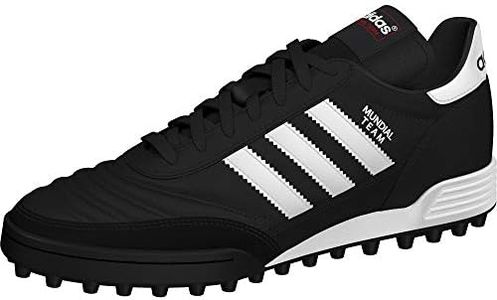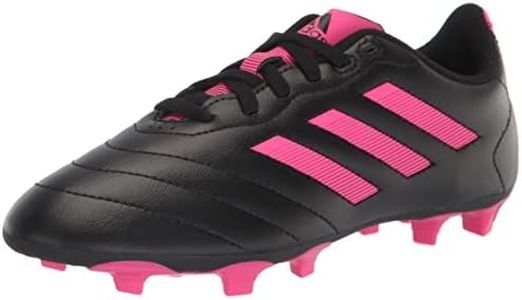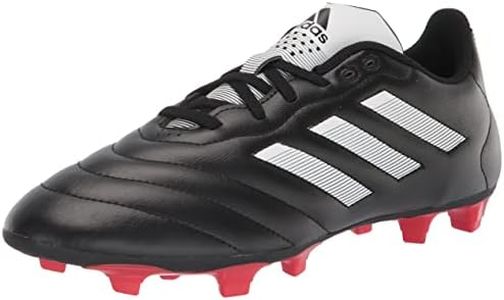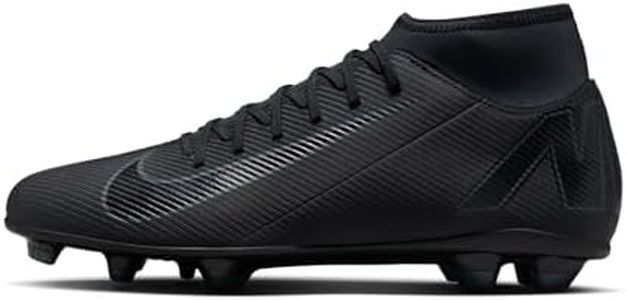We Use CookiesWe use cookies to enhance the security, performance,
functionality and for analytical and promotional activities. By continuing to browse this site you
are agreeing to our privacy policy
10 Best Soccer Cleats
From leading brands and best sellers available on the web.Buying Guide for the Best Soccer Cleats
Picking the right soccer cleats can make a big difference in how comfortable, agile, and confident you feel on the field. The best fit depends on where and how you play, your skill level, and your personal preferences. Before making a choice, think about the type of ground you usually play on, your typical playing position, and the shape of your feet. It's important to understand the main features of soccer cleats, as each one influences performance and comfort in different ways—knowing what to look for can help you find the perfect pair for your style and needs.Stud Pattern and TypeThe stud pattern refers to how the cleats are arranged and what shape they are. Studs are important because they provide traction and stability, which helps prevent slipping and allows quick movement. There are different types: firm ground (FG) for natural grass, soft ground (SG) for wet or muddy fields, turf (TF) for artificial turf, and indoor (IN) for gym floors. Each has a unique design for grip. To choose the right one, think about where you usually play—natural grass, artificial turf, or indoors. Pick a stud pattern that matches your field to maximize comfort and effectiveness.
MaterialThe material of the cleat upper affects durability, comfort, and touch on the ball. Leather is soft, molds to your foot, and provides excellent touch, but can be heavier and less water-resistant. Synthetic materials are lighter, often more durable in wet conditions, and easier to clean, but may offer less of a natural feel. Knit uppers are flexible and lightweight, suited for players who value comfort and agility. Think about if you want extra comfort and ball feel (go for leather), lightness and weather resistance (try synthetics), or a flexible fit (knit).
Fit and ShapeFit is how the cleat holds your foot—too loose and you risk blisters, too tight and you’ll be uncomfortable. Some cleats are designed for narrow feet, others for wider shapes. Fit is crucial for performance and injury prevention. Cleats come in different shapes, so consider if your foot is wide, narrow, or somewhere in between. Try on different pairs and walk around; if you feel snug support without pain or pinch, that's a good sign. Aim for a fit with a bit of space at the toe but a secure feel all around.
Ankle Collar HeightAnkle collar height refers to whether the cleat comes up above your ankle (mid/high-cut) or sits below it (low-cut). Higher collars offer extra support and sometimes a more secure feel, which some players like, especially for cutting and changing direction. However, low-cut cleats give you maximum freedom of movement and are preferred by players wanting speed and agility. Consider your style—if you value support, go higher; if you want quick direction changes and more ankle movement, go lower.
WeightThe weight of the cleat affects how fast and agile you feel. Lighter cleats are often chosen by wingers and forwards for speedy runs, while slightly heavier models might provide more padding and protection, suitable for defenders. Think about your playing style; if you're focused on speed, lighter cleats may be best. If you want more protection or have a more physical role, a sturdier, heavier option could be better.
Cushioning and InsoleCushioning and insole design impact comfort and shock absorption, especially on harder surfaces. Some cleats have extra padding, while others are more minimal to keep weight down. If you play a lot or on harder fields, consider models with good insole cushioning to reduce foot fatigue and risk of soreness. The right balance between comfort and connection to the ground will depend on your needs and how sensitive your feet are.















